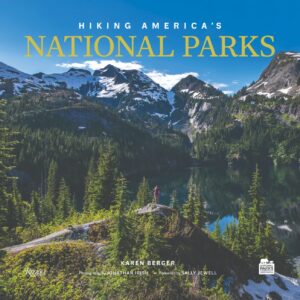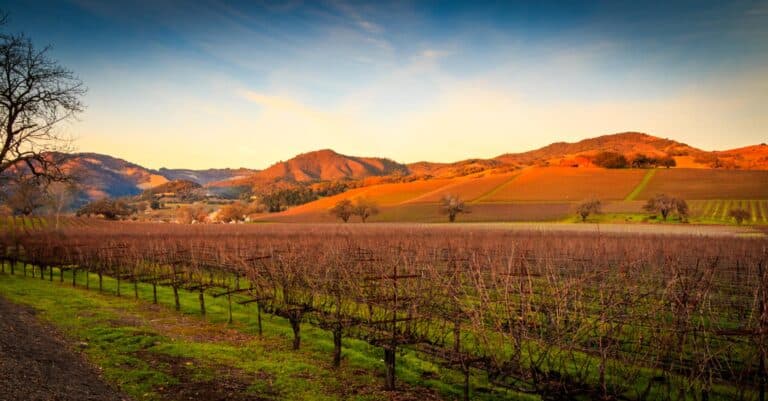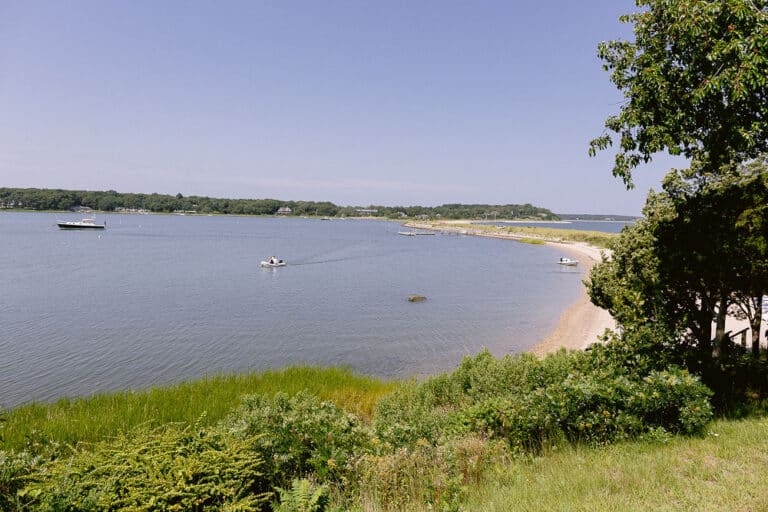Author Karen Berger has hiked more than 18,000 miles on six continents, including thousands of miles in America’s national parks. Her book, Hiking America’s National Parks, takes a deep dive into the 63 national parks found in the US. Here, we share what she has to say about eight of them.
Hawai’i Volcanoes National Park, Hawai’i
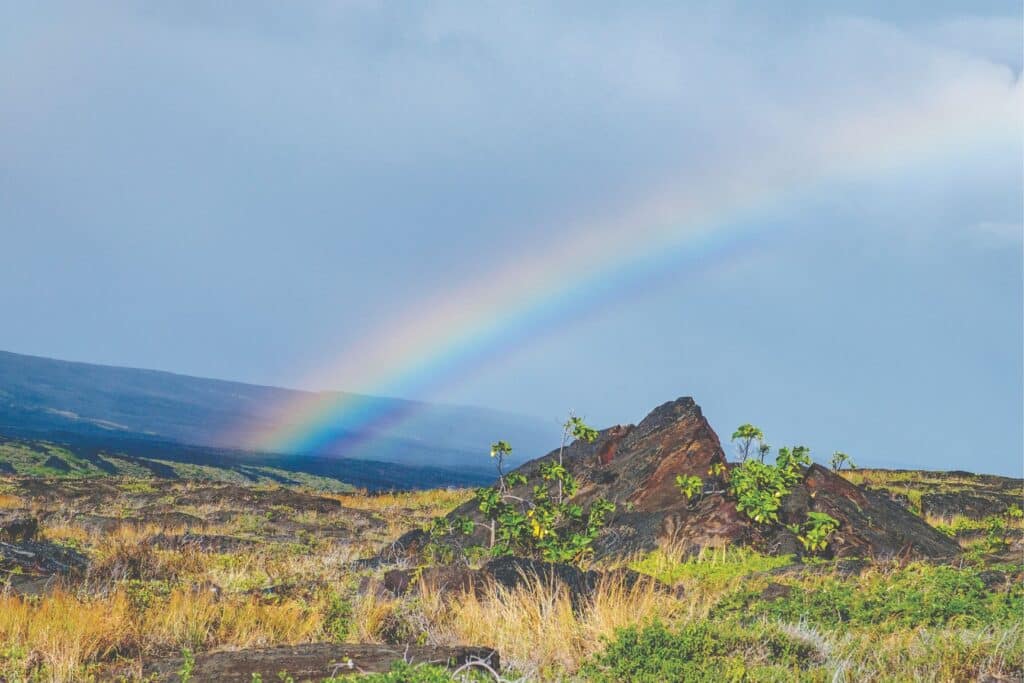
What Makes This Park Special:
Several factors contribute to making Hawai‘I Volcanoes National Park one of the most diverse parks in the system, with a unique combination of ecological and geological features. Its remote location of the Hawaiian Archipelago—in the middle of the Pacific Ocean more than 2,000 miles from the next landform— means that its ecosystems evolved in isolation. Some 90 percent of the plants and animals are endemic, having been brought here by wind, waves and water and left to evolve independently. The nearly 14,000-foot range in elevation from sea level to summit is one of the greatest differentials in the entire national park system.
Hike to Try:
There are about 150 miles of trails showcasing the diversity of this park: black sand beaches, rough and desert-like fields of ‘a‘ā (brittle and rough lava) and pāhoehoe (smoother, rounder lava that is easier to walk on), arid and subtropical lowlands, rain forests on the mountain slopes, and an alpine zone where temperatures can drop below freezing and hikers might feel snowflakes tickling their noses. The Crater Rim Trail gives hikers a 270-degree circle around much of the caldera and can be combined with the Thurston Lava Tube (Nāhuku to the Hawaiian people), where you can walk through a tunnel made of lava. Also in this area is the Devastation Trail, a paved path through a stark landscape that was buried by cinder that fell from 1,900-foot-tall lava fountains that erupted in the Kīlauea Iki explosion in 1959.
Bryce Canyon National Park, Utah
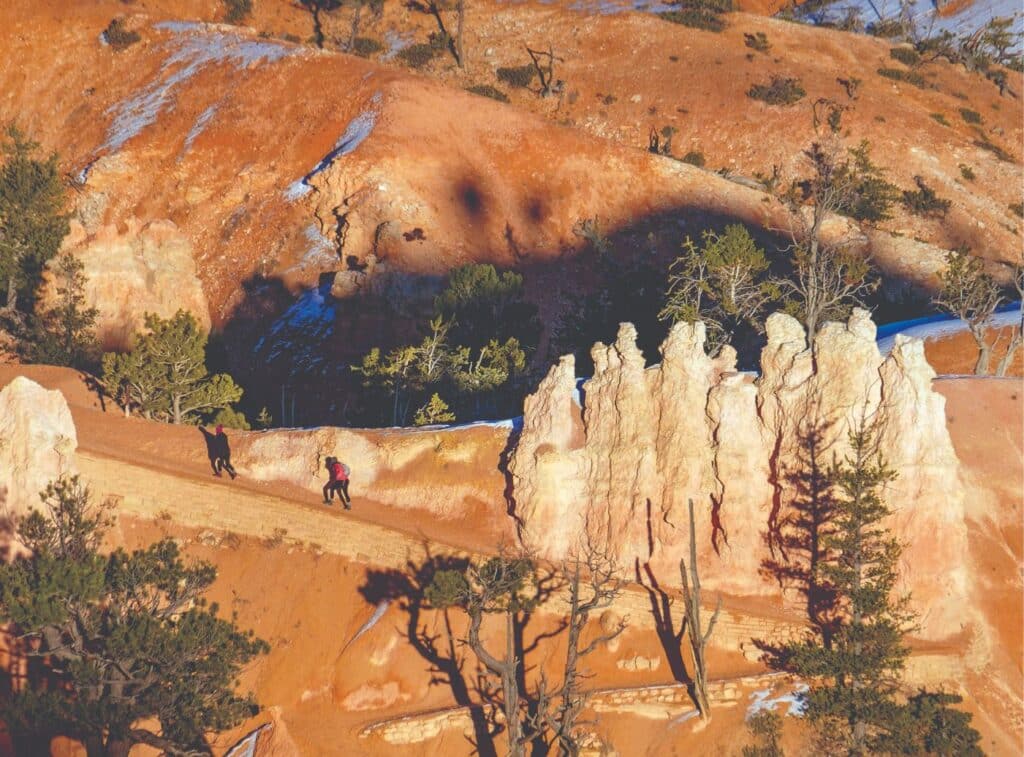
What Makes This Park Special:
The giant rocks, spires and bluffs stand guard like sentinels made of stone, looking every bit as fanciful and weird as their name—hoodoos. Thousands of them are arrayed in various formations, most of them nameless, like soldiers on parade. Bryce Canyon’s hoodoos rise to 200 feet, the result of terrain that was uplifted by tectonic movement, then carved into fantastical shapes. A combination of freezing and thawing cycles split the rock; then rain, snow and ice found its way into the crevices, where it cut and carved and expanded, creating the rock statues. The colors—shades of beige, orange, white and buff—change with the weather and the angle of the sun as it moves through its daily and seasonal cycles.
Hike to Try:
For day hikers, one of the classic routes is the Rim Trail, which winds near the mesa top for 5.5 miles (one way) between Bryce Point and Fairyland Point. This hike goes past all the main car-accessible viewpoints, but adds many other viewpoints along the way. It also connects with other trails in Bryce Amphitheater.
Yosemite National Park, California
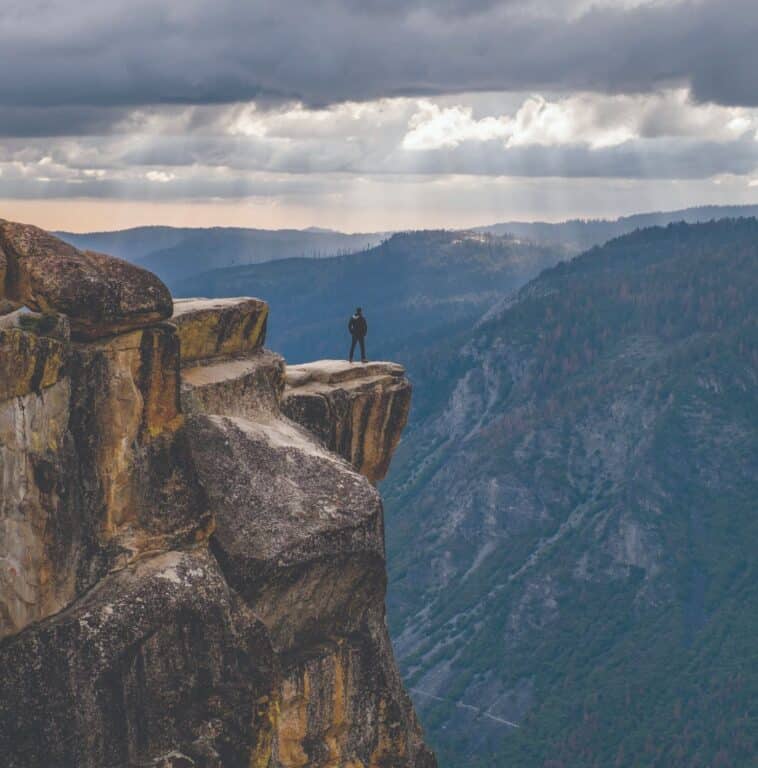
What Makes This Park Special:
Images of Yosemite are ground into our collective mental map of America. Approaching Yosemite Valley can almost feel like a homecoming, even for a first-time visitor, except that—unlike remembering your hometown from childhood—Yosemite seems even bigger in reality than in the imagination. And more brilliant as well. The park’s 1,187 square miles contain roughly 800 miles of trail.
Hike to Try:
The Hetch Hetchy area is far less visited, but its trails give visitors an idea of what the valley might have been like before it was flooded by a dam. Hikes include the 2-mile round trip to Lookout Point, from which there is a viewpoint overlooking the flooded valley, and the trail to Wapama Falls, which is a moderate 5-mile round trip that includes two other waterfalls en route, plus wildflowers (spring is the best time for this one).
Denali National Park & Preserve, Alaska
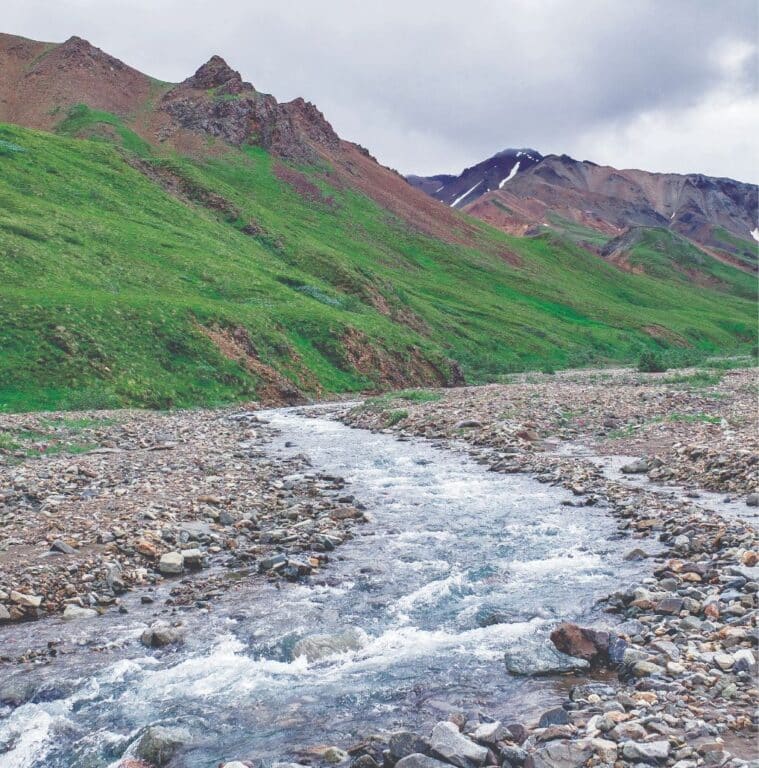
What Makes the Park Special:
At 20,310 feet above sea level, Denali is not only the highest mountain in North America, but also one of the most prominent and isolated peaks on Earth. With such scale, it seems only fitting that the mountain would be protected as one of the first national parks. Denali may be enormous, but in some respects, planning a trip there is simpler than planning a trip to many smaller parks. By Alaska standards, it is reasonably easy to get to Denali via roads, buses, rail, charter plane and even tours from cruise ships. Inside the park, there is only one road (mostly dirt and gravel). The main activities for visitors include bus tours, wildlife and landscape photography, bicycling, hiking, backpacking, climbing (for the brave of heart), and, in season, dogsledding.
Hike To Try:
The Taiga Trail acts as a connector from which many other popular trails head out in ever-expanding spurs and loops. The Roadside, Rock Creek, Mount Healy Overlook (a tough hike, but good views of Denali), McKinley Station, Horseshoe Lake and Triple Lakes trails are just a few, and they can be combined in all sorts of ways to fashion hikes that can take anywhere from half an hour to all day.
Great Smokey Mountains, North Carolina and Tennessee
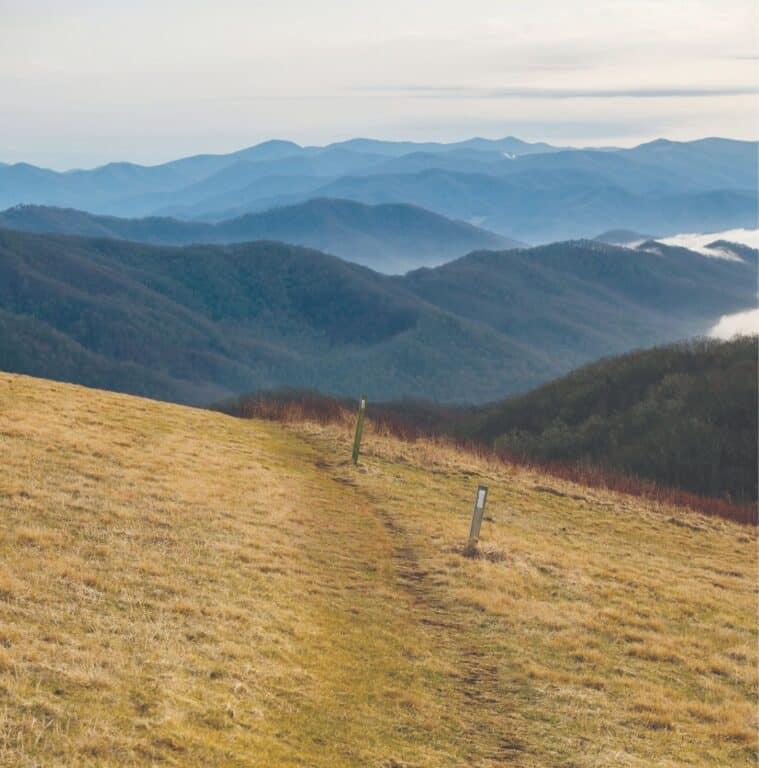
What Makes the Park Special:
The park is home to 63 mammal species, nearly 70 species of native fish, more than 80 kinds of reptiles and amphibians, about 240 species of birds, and about 19 species of fireflies, one of which puts on a springtime synchronous display that lights up the forest and draws visitors from around the world (if, that is, they are lucky enough to get one of the tickets, drawn by lottery). Great Smoky Mountains National Park is also home to some 1,500 black bears.
Hike to Try:
Near Bryson City, a short 2-mile loop near the Deep Creek Ranger Station goes to three waterfalls—Tom Branch Falls, Indian Creek Falls and Juney Whank Falls—making it a great family hike.
Virgin Islands National Park, Virgin Islands
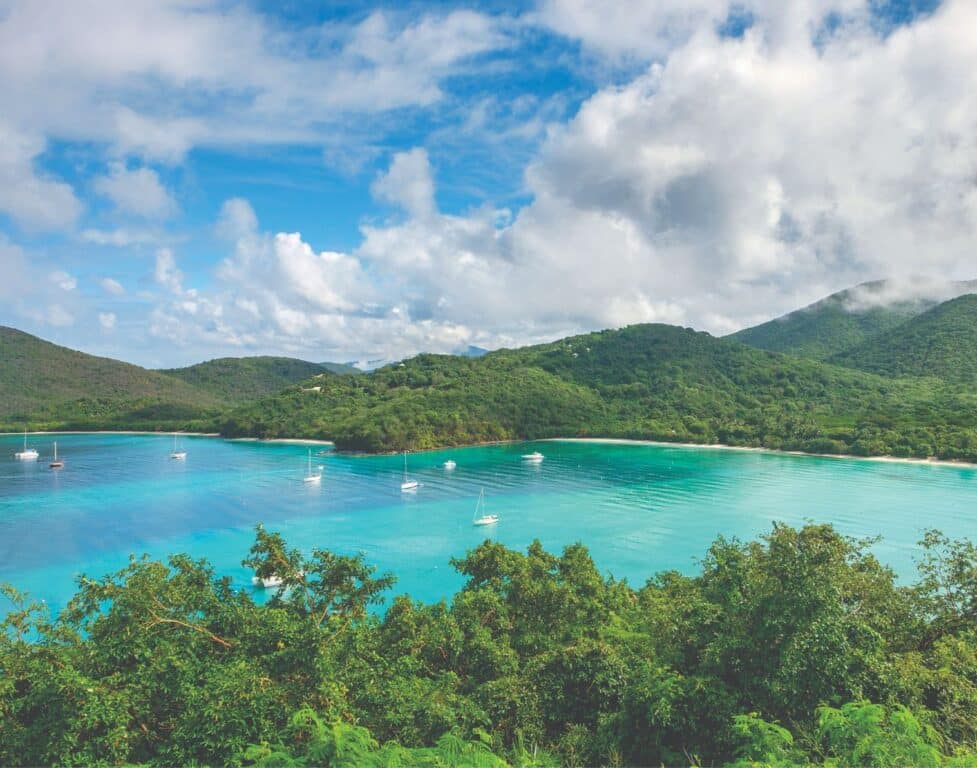
What makes the Park Special:
Virgin Islands National Park takes up about 60 percent of the island of St. John, including 5,500 acres of surrounding ocean, as well as almost all of Hassel Island, a small island located near the capital city of Charlotte Amalie on St. Thomas. An additional 13,000 acres of coral reef, sandy bottoms, seagrass beds and mangrove forests are protected under the auspices of the adjacent Virgin Islands Coral Reef National Monument. Nature is the highlight here, with beach walking, snorkeling, scuba diving and boating among the most popular activities.
Hike to Try:
The three-mile Reef Bay Trail combines hiking, history and beach sitting. The trail leads down through forests and past a waterfall and pool, ancient petroglyphs, an old sugar mill, a beach and the chance to snorkel on the Genti Bay coral reef.
Olympic National Park, Washington
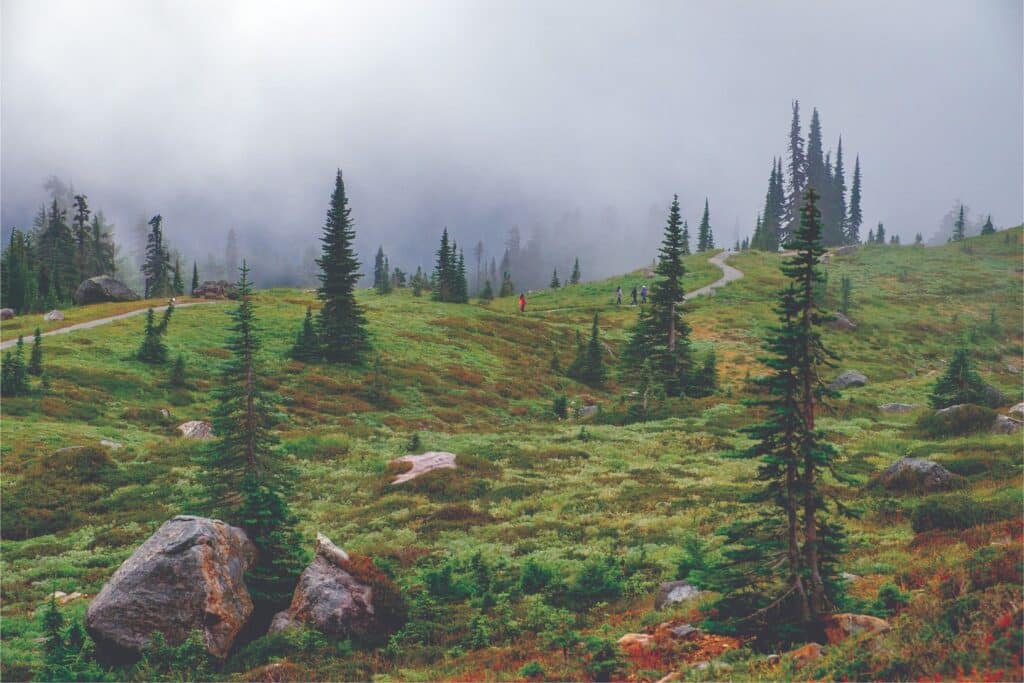
What Makes This Park Special:
Sprawling over the center of the Olympic Peninsula, a short hop across Puget Sound from the Seattle metropolitan area, the park attracts some three million visitors a year, putting it on the top 10 list of most visited parks. But despite the park’s popularity, its interior is quiet and remote. Most visitors flock to those areas that are accessible via the park’s few roads. However, the interior contains the largest wilderness area in Washington, accessible only on foot.
Hike to Try:
The Hurricane Ridge area on the northeast side is one of the most visited sections of the park, with views into the mountainous interior and numerous trail options, including the popular 3.2-mile, roundtrip Hurricane Hill Trail.
Biscayne National Park, Florida
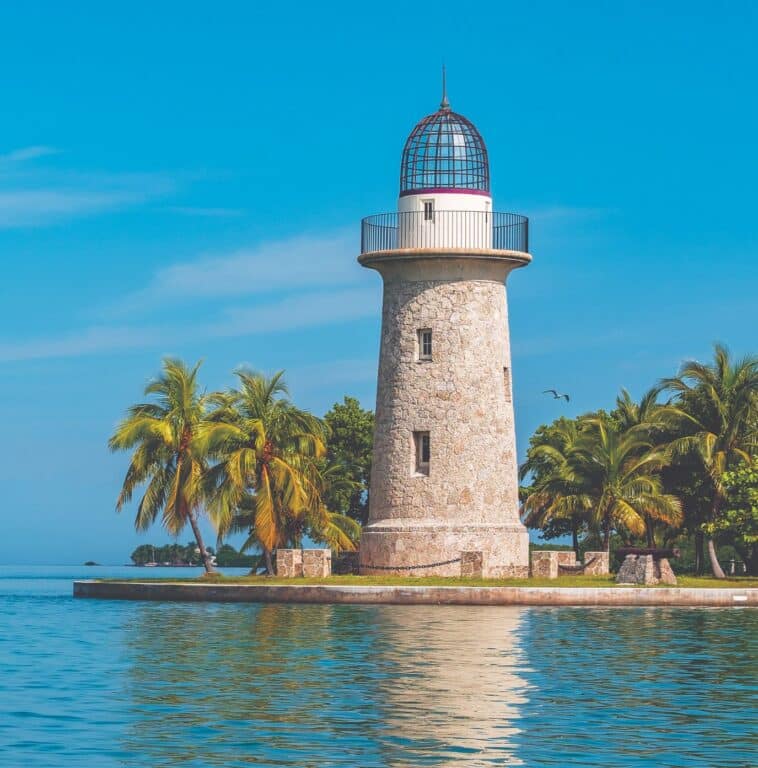
What Makes the Park Special:
Biscayne is within sight of glittering, sky-scraping Miami and yet 95 percent of this national park’s acreage is underwater. Understandably, this is largely a water activities park with a rare combination of shipwrecks, coral reefs and mangroves. What makes this park so unique is that there are marked paddling trails for canoes, kayaks and paddleboards. The park protects 72,000 acres of the northernmost range of the Florida Reef.
Hike to Try:
There are four paddling trails which begin at the visitor’s center. There’s also a boating-snorkeling-diving trail that visits six marked shipwrecks which act as artificial reefs, attracting colorful coral and fish life. For hikers, Elliott Key offers a hefty seven-mile, one-way hike on the Spite Highway Trail, but to get to it, you have to first get to Elliott Key by boat. Originally a six-lane highway down the center of the barrier island, the trail has now been reclaimed by the forest. What is left is a wide, flat hiking thoroughfare with no elevation change.
Reprinted with permission from Hiking America’s National Parks by Karen Berger, Photography by Jonathan Irish, Rizzoli, 2023.
